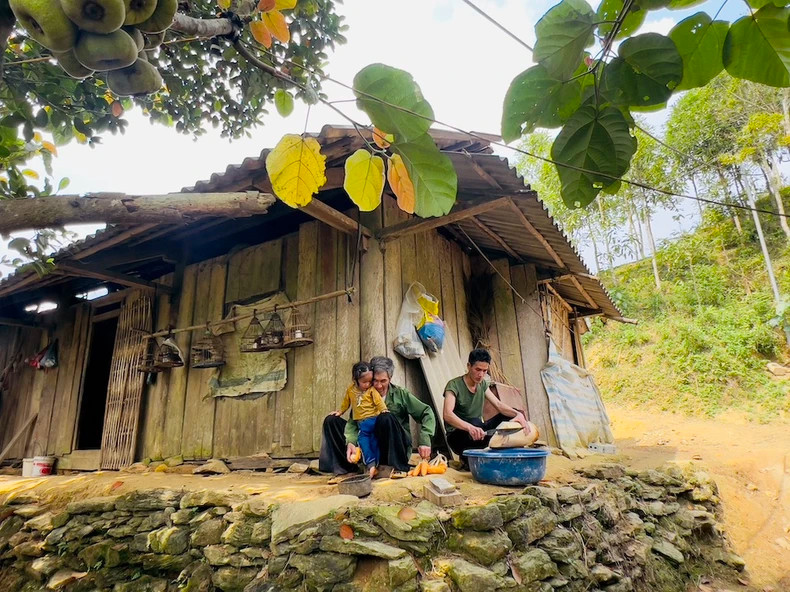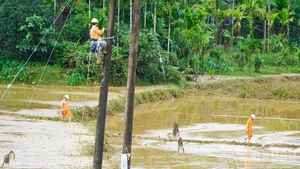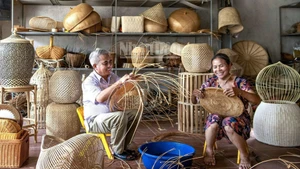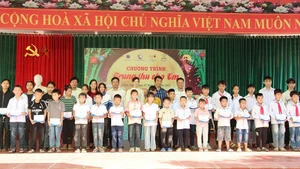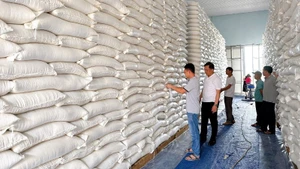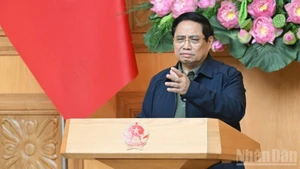A solid roof, a transformed life
In late April, inside his newly delivered house, Giang Vang Dinh, born in 1956, was busy organising his belongings and clearing out his old house, situated just a few dozen meters away.
Previously, Dinh’s entire family—his wife, two sons, and a 3-year-old grandson, who had been orphaned shortly after birth—lived together in a dilapidated bamboo house.
As a veteran, Dinh still keeps and displays the commendations recognising his contribution to national defense. However, his family’s livelihood relies entirely on farming cassava and maize, which provide only an unstable income, just enough to cover basic living expenses.
“I never dared to dream that I could one day live in a house like this. The new house is solid, clean, with windows and full electricity. My family feels much safer when it rains or storms,” Dinh shared.
The house is one of six homes funded by the Bank for Investment and Development of Vietnam (BIDV) in Cat Thinh commune as part of a social welfare programme.
Not far from Dinh’s house is Ba Chum village, home to Giang Thi Le, born in 1989. Her family is one of the most disadvantaged in thIis round of assistance. At just 36 years old, La has given birth to 12 children. One child passed away early, another son has hearing impairment, and her eldest child is married with two young children. The family lives in a 40 square-metre-house, which lacks a foundation or brick walls, forcing them to live cramped together for years.
Her family relies on farming and manual labour, which isn’t enough to improve their living conditions.
Her new home was built to the same standard as the others: 60 million VND per house, with a sturdy frame, brick walls, a fibro-cement roof, a smooth cement floor, and a separate sanitation area. The construction process was monitored by local authorities and the sponsor's representatives to ensure quality and progress.
Mobilising Local and Corporate Support to Eliminate Dilapidated Houses
Since 2021, Cat Thinh commune has successfully constructed over 40 new houses for poor households. By 2025, following a thorough review, the commune identified six households in urgent need of support to replace their temporary, dilapidated homes. These households, primarily from ethnic minority groups, face unstable incomes and difficult living conditions.
 |
| Local government representatives and business sponsors hand over new homes to Giang Vang Dinh’s family. (Photo: NHAT QUANG) |
Following the Prime Minister’s Directive No. 42/CT-TTg on eliminating temporary and dilapidated houses and the associated Official Dispatch No. 117/CĐ-TTg, Cat Thinh commune has been actively implementing the national poverty reduction program for the 2021-2025 period.
The construction project has completed all six houses ahead of schedule. The entire commune is on track to meet its goal before the provincial deadline of June 30.
The new homes meet the required minimum space of 8–10 square metre per person, suitable for the living conditions of highland ethnic minorities, and are designed to last for at least 25 years. In addition, all households have been provided with separate sanitation facilities, significantly improving living conditions and meeting environmental standards for new rural development.
The new houses have a minimum area of 8-10 square metre per person, suitable for highland living conditions, and are guaranteed to last for over 25 years. Each household now has separate sanitation facilities, improving living conditions and adhering to environmental standards in rural development.
Tran Tien Dung,
Vice Chairman of Cat Thinh Commune People’s Committee and Deputy Head of the Steering committee for eradication of temporary, dilapidated houses
This year, each house received 60 million VND in support from the state budget and socialised sources, an increase from previous years, where each house received 50 million VND. Notably, these houses were funded by BIDV. In addition to housing support, BIDV is also active in local social initiatives, including education, healthcare, and disaster recovery.
Cat Thinh commune, with more than 2,500 households and around 12,000 residents, including six Mang ethnic villages, faces a poverty rate of up to 99%. It remains the only commune in the district not undergoing consolidation due to its large area and dispersed population.
At the house handover event in Cat Thinh, Nguyen Thi Lien Phuong, Deputy Director of BIDV Yen Bai branch, emphasised that the programme represents more than just financial support—it’s also a reflection of the company’s corporate social responsibility. BIDV is sponsoring the construction of 600 houses in Yen Bai province, with a total investment of 36 billion VND.
By April 2025, Yen Bai province had completed 2,087 out of 2,208 houses planned for the 2021-2025 period, achieving over 90% of the target. Provincial leaders have assured that the remaining houses will be completed before August 2025, ahead of the rainy season.
Nguyen The Phuoc, Vice Chairman of the Provincial People's Committee, stressed: “Eliminating temporary houses is a political task, reflecting the Party and State’s concern for people in disadvantaged areas. Yen Bai province would continue to mobilize social resources to meet the target ahead of schedule.”
